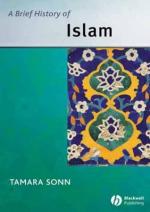|
This section contains 1,313 words (approx. 5 pages at 300 words per page) |

|
Leavened and unleavened breads were the most typical daily food in most of the region from North Africa to Central Asia. (In India and Southeast Asia, where Islam spread toward 1500, breads were less of a staple.) Baked in loaves—round or other shapes—breads varied widely from region to region—even from city to city, village to village, and household to household. Regional variations may be explained in part because different climates, are best suited to growing different grains. Regional techniques of milling grain, leavening the dough, baking bread, and serving it usually predated Islam. Dissemination of these practices into new areas accelerated with migration, trade, and the spread of Islam. The basic steps for making bread were universal, but the details differed; producing a huge variety of breads.
Grinding the Flour: Bread was made from grains such as...
|
This section contains 1,313 words (approx. 5 pages at 300 words per page) |

|




